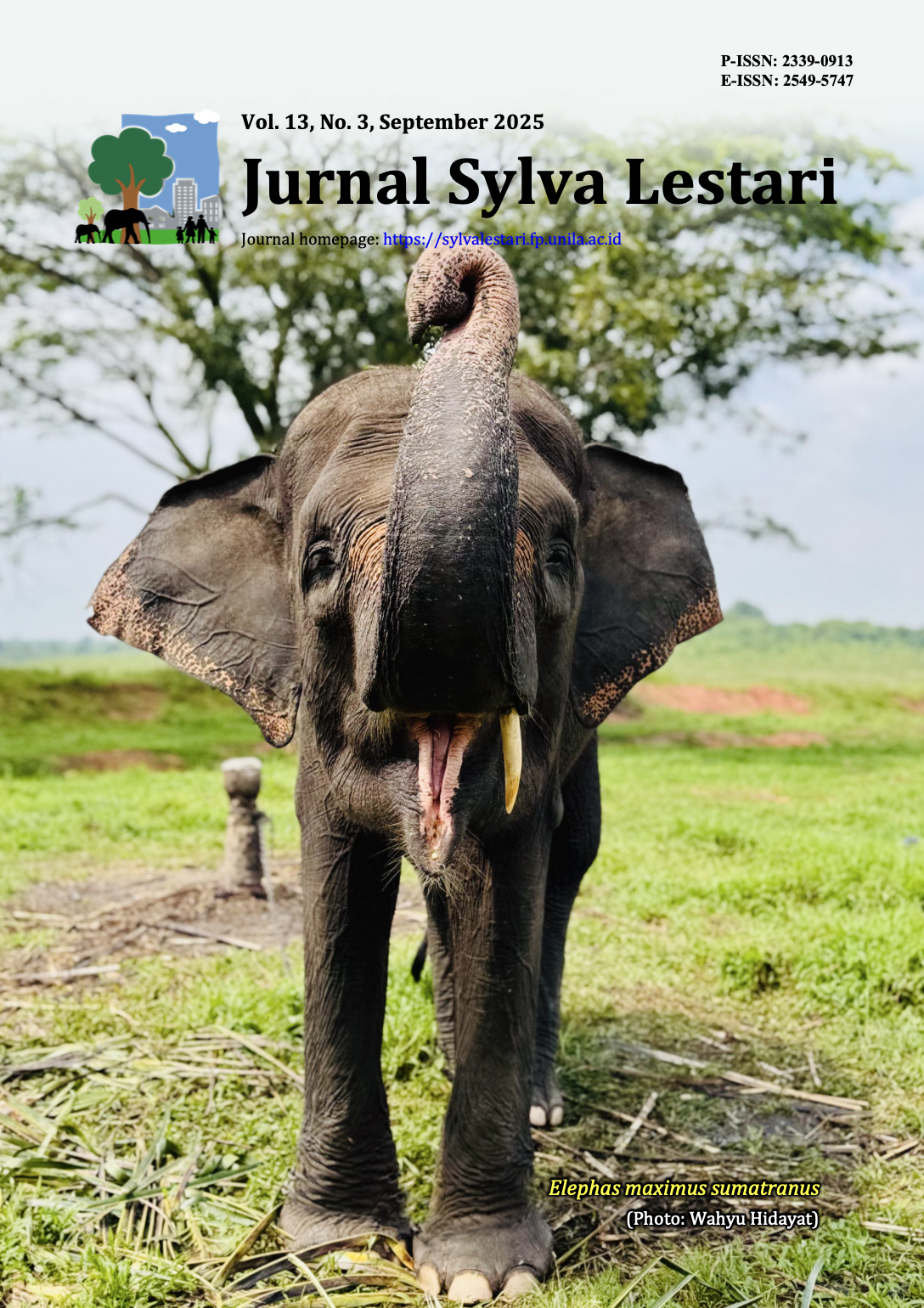Impact of Acacia mangium Willd. Plantation on Species Composition at Bugoy’s Peak, Barangay Bonbon, Butuan City, Philippines
DOI:
https://doi.org/10.23960/jsl.v13i3.1153Abstract
Acacia mangium is a fast-growing tree species widely used in agroforestry and reforestation. However, it has raised concerns due to its potential ecological impacts when introduced outside its native range. This study assessed the effect of A. mangium plantations on species composition and seedling recruitment at Bugoy’s Peak, Barangay Bonbon, Butuan City, Philippines. A total of 13 plots were established using a nested quadrat design to evaluate tree diversity and regeneration patterns. Biodiversity indices and statistical tools were employed to analyze species abundance and composition within the plantation area. Results indicated that A. mangium did not exhibit signs of invasive dominance in the site. On the contrary, the presence of regenerating native species across plots suggests that local conditions may support coexistence and recruitment despite the presence of an introduced species. These findings highlight the importance of site-specific assessments in evaluating the ecological impact of non-native tree species and offer valuable insights for sustainable plantation management in biodiverse landscapes.
Keywords: Acacia mangium, diversity assessment, invasive species, seedling regeneration, species composition
Downloads
Downloads
Published
How to Cite
Issue
Section
Statistics
 Abstract views: 263 times
Abstract views: 263 times PDF downloaded: 199 times
PDF downloaded: 199 times
Metrics
License
Copyright (c) 2025 Reymark Moring Calope, Nathaniel Buron Villa, Louie Jay Fijo Palas, Victor Lobrigas Corbita, Cornelio Sacquiap Casilac Jr, Rey Naldoza Cossid, Mark Angelo Palero Perodes

This work is licensed under a Creative Commons Attribution-NonCommercial 4.0 International License.
Authors retain copyright and grant the journal right of first publication with the work simultaneously licensed under a Creative Commons Attribution-NonCommercial 4.0 Licence that allows others to share the work with an acknowledgement of the work's authorship and initial publication in this journal.
Authors are able to enter into separate, additional contractual arrangements for the non-exclusive distribution of the journal's published version of the work (e.g., post it to an institutional repository or publish it in a book), with an acknowledgement of its initial publication in this journal.
Authors are permitted and encouraged to post their work online (e.g., in institutional repositories or on their website) prior to and during the submission process, as it can lead to productive exchanges, as well as earlier and greater citation of published work (See The Effect of Open Access).









